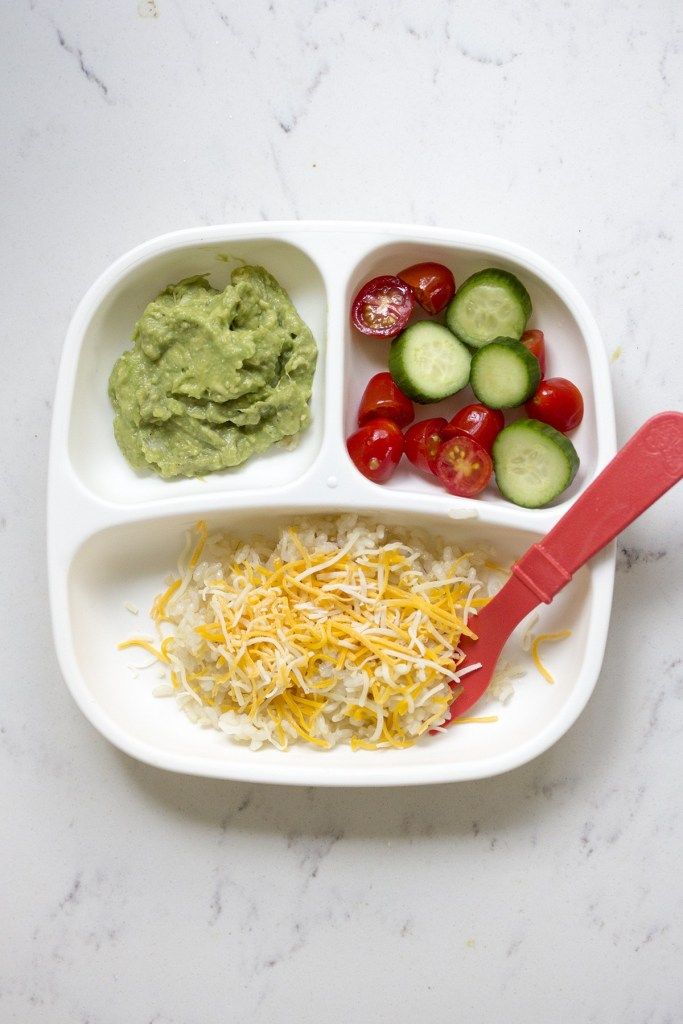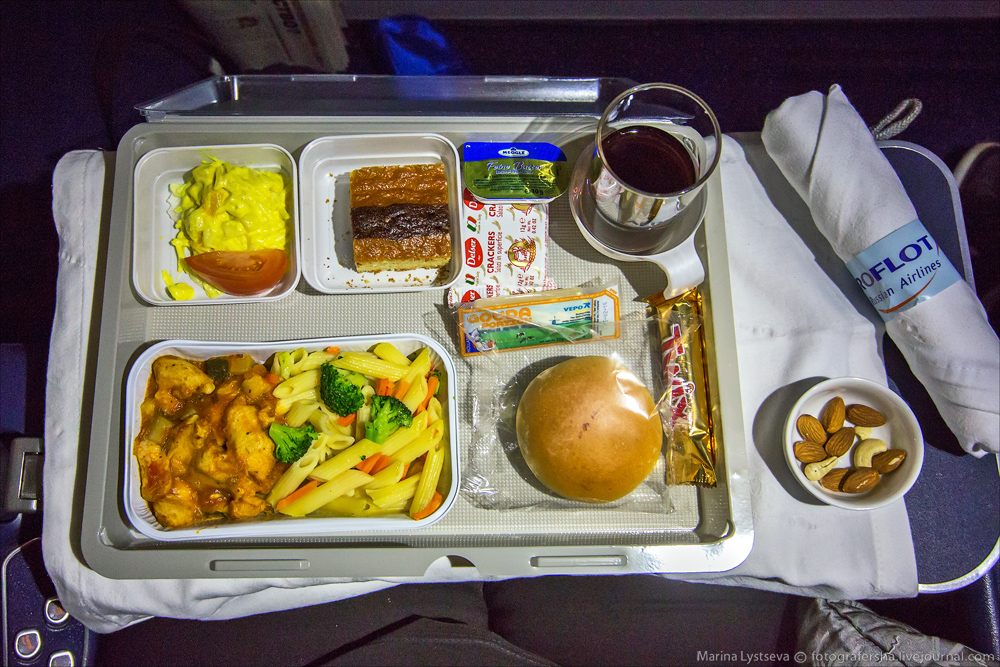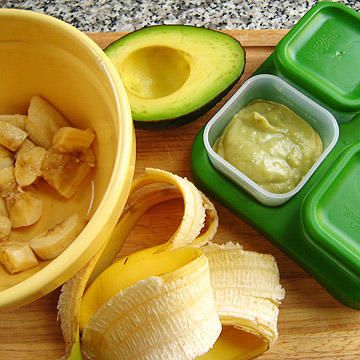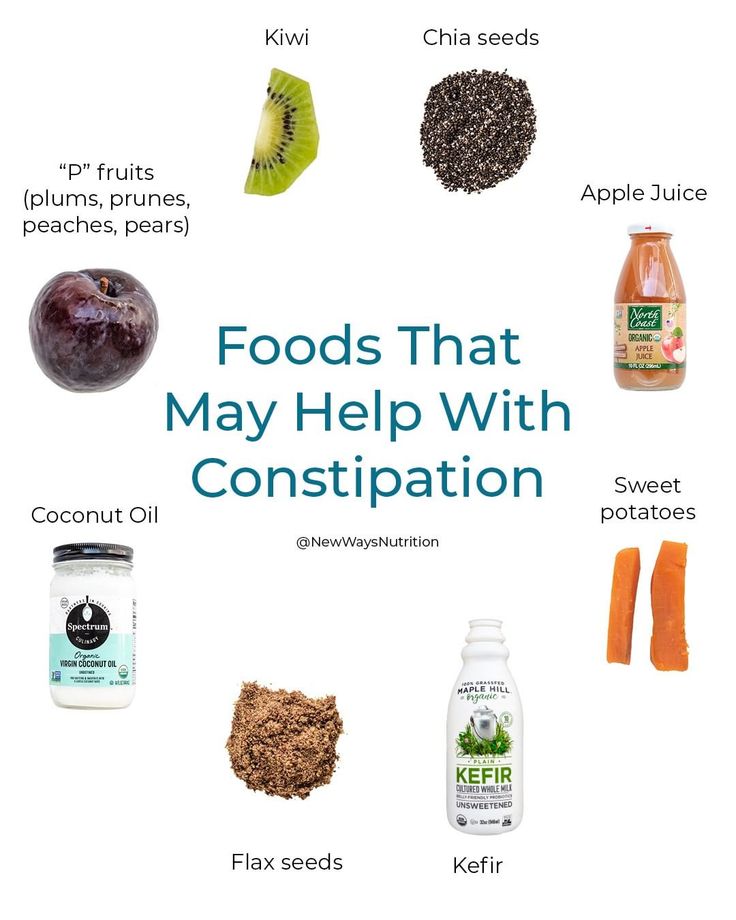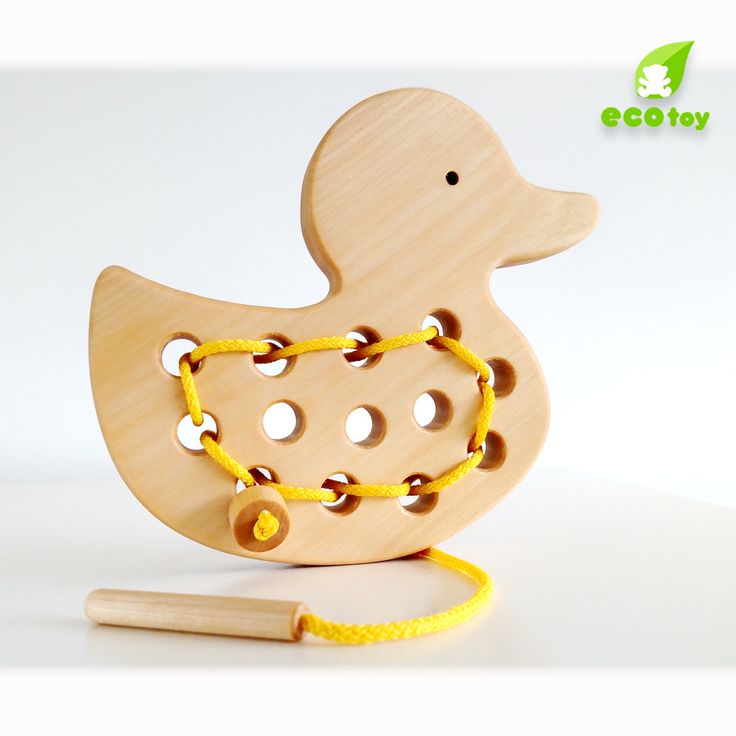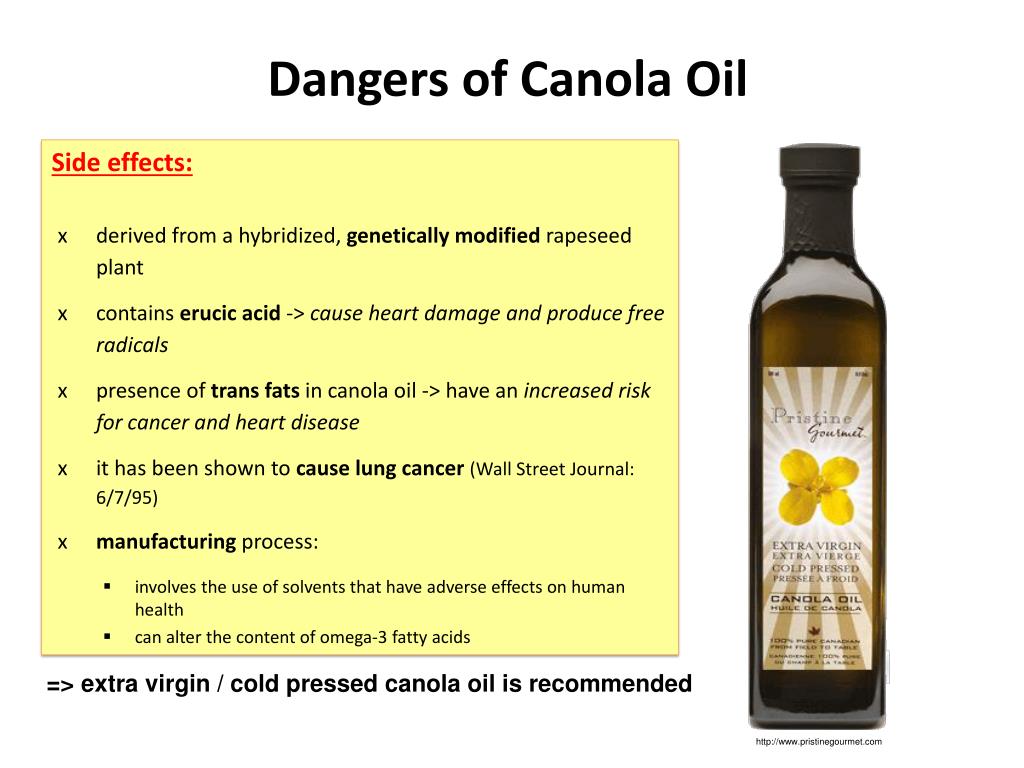Tomato baby food recipe
Ultimate Guide to Tomatoes for Babies (with Recipes)
Jump to Recipe
Tomatoes are the perfect finger food for babies. Here's how to cook and serve to your baby along with plenty of recipes to help make introducing tomatoes easy and fun!
Jump to:- When can babies eat tomatoes?
- Health Benefits
- Are tomatoes safe for babies?
- Selecting the best tomatoes
- Cooking Methods
- How to cut tomatoes for babies
- Baby-Friendly Tomato Recipes
- Frequently Asked Questions
- How to Cook Tomatoes for Babies
When can babies eat tomatoes?
This nutritious fruit be offered to babies as soon as they’re ready to start solids, usually around 6 months. It’s important to remember that your baby is unique and that rather than going by the calendar, you need to make sure your baby is DEVELOPMENTALLY ready to start solids.
If you’re unsure, be sure to grab my FREE handout!
Health Benefits
Although prepared like a vegetable, tomato is actually a fruit that belongs to the nightshade family, along with eggplants, potatoes, and peppers.
The rich red color of tomatoes is due to a powerful antioxidant called lycopene, which has been linked to many health benefits including heart health, protection against cancers and sunburns.
The yellow and orange-hued tomatoes contain beta carotene (also found in carrots and sweet potatoes).
Both lycopene and beta carotene are carotenoids which, once consumed, get converted into vitamin A, a key nutrient for good vision, cell growth, and a healthy immune system.
Carotenoids must be consumed through the diet and are best absorbed when eaten with dietary fat.
Tomatoes are also great sources of vitamin C which, when paired with plant-based iron foods, can greatly enhance the absorption of iron.
Are tomatoes safe for babies?
Raw tomatoes, particularly cherry and grape tomatoes, are a potential choking hazard, so be sure to follow the serving suggestions listed below.
You may notice redness where the tomatoes came in contact with your baby's skin. This is not necessarily a sign of an allergic reaction. Rather it's most likely a mild skin irritation due to the tomato's high acid content.
This is not necessarily a sign of an allergic reaction. Rather it's most likely a mild skin irritation due to the tomato's high acid content.
Most definitely consult your doctor if the irritation is severe. But if it's mild and goes away once the skin is cleaned, then there's no need to restrict tomatoes from their diet.
If it bothers you, though, opt for orange and yellow tomatoes which tend to be less acidic.
Selecting the best tomatoes
Nothing beats locally grown tomatoes during their peak summer season. The less they travel and more time they spend ripening on the vine, the better!
There are thousands of types of tomatoes, but you're most likely to find beefsteak, roma, cherry, grape, and heirloom tomatoes.
No matter the variety, here are some things to look for:
- Choose ones that feel heavy for their size and aren't too hard or soft.
- Avoid those with bruises, blemishes, or wrinkled skin. The skin should be smooth, shiny, and uniform.
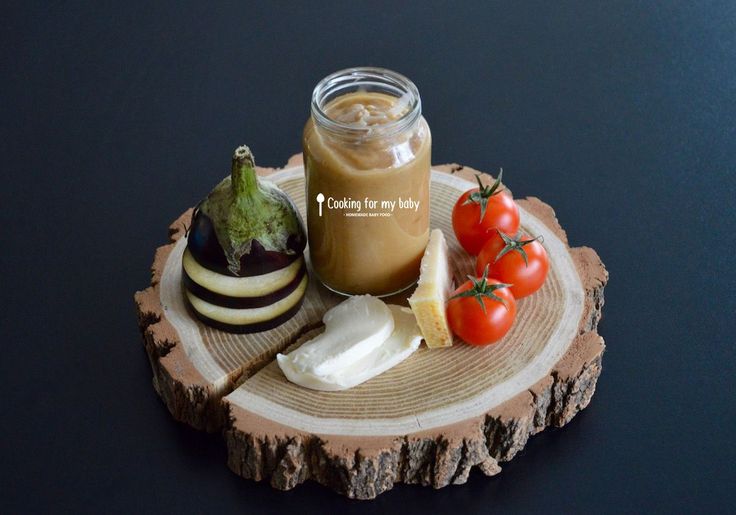
- Take a sniff! If it smells earthy and sweet around the stem end, grab as many as you can ;).
Cooking Methods
While you can serve raw tomatoes to your baby, if you are feeling nervous and want to cook until soft, then here are the top methods to try.
Note that cooking will increase lycopene while decreasing vitamin C content.
I recommend leaving the skin on for added nutritional value, but you can certainly peel it before serving if it makes you feel more comfortable.
Blanch
Boil a pot of water. Using a pairing knife, cut an "X" in the bottom of each tomato. Cut just enough to pierce through the skin, but not too deep into the flesh. Add to the boiling water and cook for 20-30 seconds. Remove and put in ice-water-filled bowl.
Steam
- Place water in a pot, add steamer basket, and bring to a boil. Cut an "X" in the bottom of each tomato and place in the basket cut side up.
- Cover and steam for 3-4 minutes.
You can transfer to a bowl with ice, but I normally don't do this.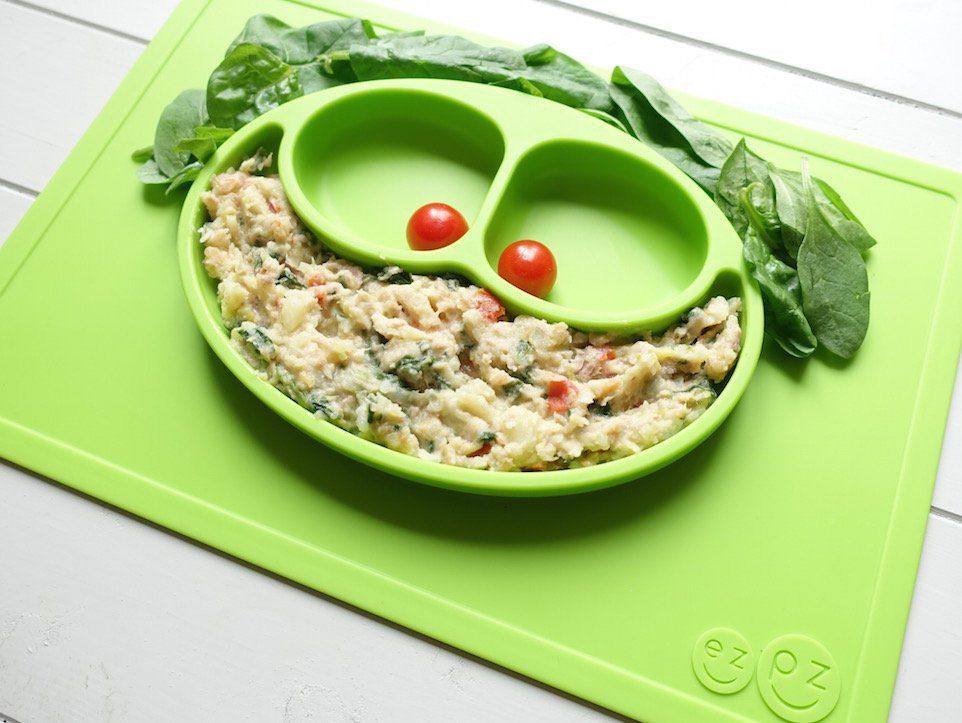 You should be able to easily peel the skin.
You should be able to easily peel the skin.
Roast
- Preheat oven to 450°F. Cut tomatoes in half lengthwise. Place in a bowl and toss with generous amount of oil and seasoning(s) of choice.
- Transfer to a lined baking sheet. Spread in single layer, flesh side up.
- Roast for 30-35 minutes.
How to cut tomatoes for babies
6+ months old
Cut raw or cooked tomato into large wedges. You can leave the skin on or off. Your baby will most likely spit out the skin but it's a great exposure to texture.
Serve as a puree, tomato sauce, or soup (see recipes below). Stir in lentils, oatmeal, or pasta.
Best First Foods for Babies
9+ months old
By 8-9 months of age, your baby should develop their pincer grasp and be able to pick up smaller pieces. In addition to all the suggestions above, you can start offering bite-sized pieces. But do continue offering larger pieces so they can practice taking bites.
Baby-Friendly Tomato Recipes
- Iron-rich Baby Pasta
- Sugar Free Pizza Sauce
- Pizza Casserole
- Healthy Sloppy Joes
- Veggie-loaded Bolognese
- Pizza Eggs
- Vitamix tomato soup
- Sweet Potato Quinoa Lasagna
Frequently Asked Questions
Are canned tomatoes or bottled sauces ok for babies?
They are such a convenient option and actually contain more lycopene than raw tomatoes. Just be sure to look for low sodium or no-salt-added options.
Just be sure to look for low sodium or no-salt-added options.
How do you cut grape or cherry tomatoes for babies?
Be sure to cut the tomatoes into quarters lengthwise. Horizontally halved tomatoes can pose the same choking risk as whole grape/cherry tomatoes.
Can babies eat tomato skin?
There is no need to peel the skin (unless it makes you feel more comfortable). It will make the tomato less slippery so your baby can easily grab and bring to their mouth. Most likely they will spit out the skin.
If you want to learn how to prepare other specific food(s), check out my How To Series!
How to Cook Tomatoes for Babies
Tomatoes are the perfect finger food for babies. Here's how to cook and serve to your baby along with plenty of recipes.
5 from 1 vote
Print PinPrep Time: 5 minutes
Cook Time: 5 minutes
Total Time: 10 minutes
Servings: 2
Author: Min | MJ and Hungryman
- ▢
Steamer
- ▢
Sheet Pan
- ▢ 1 pound Beefsteak or Roma tomatoes
- ▢ Olive or Avocado oil (if roasting)
Blanch
Boil a pot of water.
 Using a pairing knife, cut an "X" in the bottom of each tomato. Cut just enough to pierce through the skin, but not too deep into the flesh. Add to the boiling water and cook for 20-30 seconds. Remove and put in ice-water-filled bowl.
Using a pairing knife, cut an "X" in the bottom of each tomato. Cut just enough to pierce through the skin, but not too deep into the flesh. Add to the boiling water and cook for 20-30 seconds. Remove and put in ice-water-filled bowl.
Steam
Place water in a pot, add steamer basket, and bring to a boil. Cut an "X" in the bottom of each tomato and place in the basket cut side up. Cover and steam for 3-4 minutes.
Roast
Preheat oven to 450°F. Cut tomatoes in half lengthwise. Place in a bowl and toss with generous amount of oil and seasoning(s) of choice.Transfer to a lined baking sheet. Spread in single layer, flesh side up. Roast for 30-35 minutes.
To store: transfer to an airtight container and keep in the fridge for 3-5 days.
Calories: 41kcal | Carbohydrates: 9g | Protein: 2g
Course Baby Food
Cuisine American
Tried this Recipe? Tag me Today!Tag me @KidFriendly.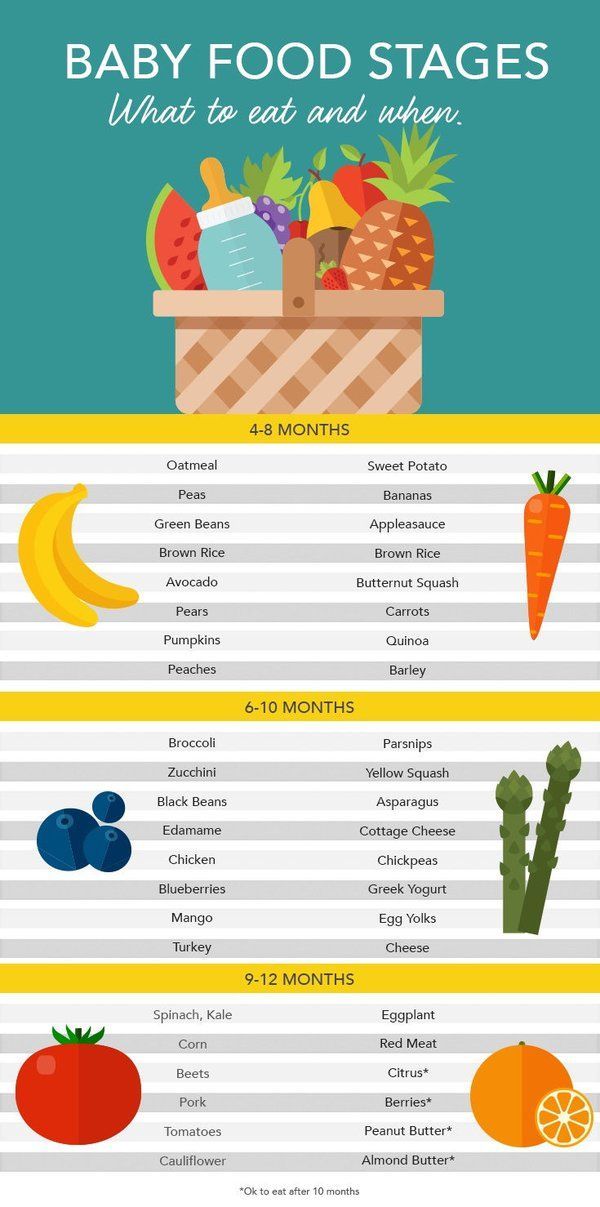 Meals today!
Meals today!
Tomato Baby Food Recipes,Tasty Tomatoes for Homemade Baby Food with the Age for Introducing Tomatoes to Baby and more
Learn all about Tomatoes in Baby Food Recipes – Introducing Tomatoes to Baby
Tomatoes are amazing sources of Vitamin A and Vitamin C. Use caution when offering these tasty little foods to you baby however; the acidity of tomatoes may not agree with baby’s tummy.
When can my Baby eat Tomatoes?
Tomatoes are typically not recommended to be introduced to an infant until somewhere between10 and 12 months of age. The reason for this is not due to possible allergies per se, rather, the acidity of tomatoes may prove harsh for an immature tummy.
Tomatoes are actually fruits and they contain a high level of acidity that may cause tummy upsets or even rashes around the mouth and/or bottom. Raw tomatoes are most likely to cause this type of a reaction as opposed to cooked tomatoes (i.e. tomato sauce). With that being said, there are many babies who have eaten tomatoes prior to the recommended age and have had no issues.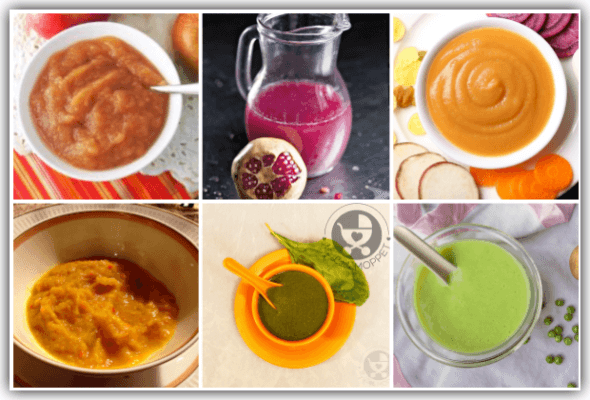 Many parents offer babies tomatoes as early as 8 months old.
Many parents offer babies tomatoes as early as 8 months old.
Should you decide to offer tomatoes earlier, please use fresh tomatoes only. Also, please be sure to cook the tomatoes – either as a sauce or sauteed with other veggies. It is said that cooking the tomatoes (much like cooking strawberries) may reduce the acidity and be more gentle on a tiny tummy.
Please also speak with your pediatrician about introducing foods that may cause allergies or may be difficult for a tiny tummy to digest. If you notice a rash around the lips/mouth and the bottom, this could be indicative of baby having a reaction to the acidity of the tomatoes. Please keep a look out for such occurrences. As always, we recommend that you consult with your baby’s pediatrician on introducing solid foods as generalities may not apply to your infant.
The Goodness of Tomatoes for Babies
Did you know that a medium sized tomato contains approximately 47% of the (U.S.) recommended daily allowance (RDA) of vitamin C, and approximately 22% of the RDA of vitamin A. Due the high levels of Vitamin C, you should try to include tomatoes in the diet to help Iron absorption!
Due the high levels of Vitamin C, you should try to include tomatoes in the diet to help Iron absorption!
Tomatoes: (1 cup cooked)
| VITAMINSVitamin A – 1174 IU Vitamin C – 54 mg Vitamin K – 6.7 mcg Folate (important during pregnancy) – 31 mcg Niacin – 1.27 mg | MINERALSPotassium – 523 mg Phosphorus – 67 mg Magnesium – 22 mg Calcium – 26 mg Sodium – 25 mg Iron – 1.63 mg Also contains trace amounts of zinc, manganese and copper. |
How to select and store tomatoes for homemade baby food
According to the EWG, tomatoes are not one of the “dirty dozen” foods that are most highly contaminated with pesticides – purchasing organic is a personal choice.
When selecting tomatoes for homemade baby food, try to purchase fresh whenever possible. Choose unbruised or otherwise unblemished tomatoes that are a bright red. When possible, buy tomatoes that are still on their vines as they will remain more fresh. Always purchase tomatoes that are firm but nor hard; you may always ripen tomatoes on the counter.
Choose unbruised or otherwise unblemished tomatoes that are a bright red. When possible, buy tomatoes that are still on their vines as they will remain more fresh. Always purchase tomatoes that are firm but nor hard; you may always ripen tomatoes on the counter.
Tomatoes should never be refrigerated until they
- have been cooked,
- have been cut or put into a raw dish like a salsa, or
- are fully ripe and would spoil if left further at room temperature.
Place tomatoes stem end up, and don’t put them on a sunny windowsill to hasten ripening. Instead, put tomatoes in a sealed paper bag with or without ethylene-producing fruit such as bananas. Ripe tomatoes will hold at room temperature for two or three days. Ripe tomatoes you’ve refrigerated to keep from spoiling will taste better if you bring them to room temperature before eating.(a)
The best way to cook tomatoes for homemade baby food
You may steam or saute tomatoes; we prefer to saute in a wee bit of olive oil and then puree or mash. Of course, you can make tomato sauce in the traditional way.
Of course, you can make tomato sauce in the traditional way.
A Few Totally Tasty Tomato Baby Food Recipes
Tomato Puree/Tomato Sauce
Ingredients:
- 4 or 5 large tomatoes
- 3 cups of water
- herbs, spices and extras such as garlic, onions, pepper, oregano, rosemary etc..
Directions:
Step 1: Thoroughly cleanse and dice tomatoes
Step 2: Add tomatoes to a large pot and then add water
Step 3: Simmer until tomatoes have turned into sauce, puree if needed
If you wish to add onions and/or peppers, saute them in a skillet prior to adding to the sauce!
Yellow, Red and Green
Ingredients:
- 1 summer squash
- 1 zucchini squash
- 2 medium sized tomatoes
- olive oil for sauteing
Directions:
Step 1: Thoroughly cleanse and dice yellow squash, zucchini squash and tomatoes
Step 2: Heat olive oil in a frying pan
Step 3: Place vegetables in the pan and sautee until tender.
Step 4: Serve over rice or add cubes of cooked chicken or beef or even fish!
Add some spices such as garlic cloves or powder, basil or onion powder if baby is able to have these spices. Chop as needed for your baby’s texture preferences.
Stuffed Tomatoes
Ingredients:
- 4 large tomatoes (try the “beefsteak” variety)
- 1 cup cooked rice or cooked quinoa
- 1/2 cup chopped sauteed onions
- 1/2 cup diced sauteed peppers
- pepper
- garlic powder
- basil
- olive oil
Directions:
Step 1: Remove top of tomatoes and slightly hallow tomatoes out (reserve the “pulp”)
Step 2: Lightly brush insides of tomatoes with olive oil and place in a glass baking dish
Step 3: Add 1 cup of water to baking dish
Step 4:. Bake tomatoes for 15 minutes, uncovered, at 400F
Step 5: Mix rice or quinoa, onions and peppers and spices (sprinkle with bread crumbs if desired)
Step 6: Remove tomatoes from oven and stuff with the rice mixture
Step 7: Place tomatoes back into the glass dish and then bake for an additional 10 minutes until stuffing is golden and bubbly.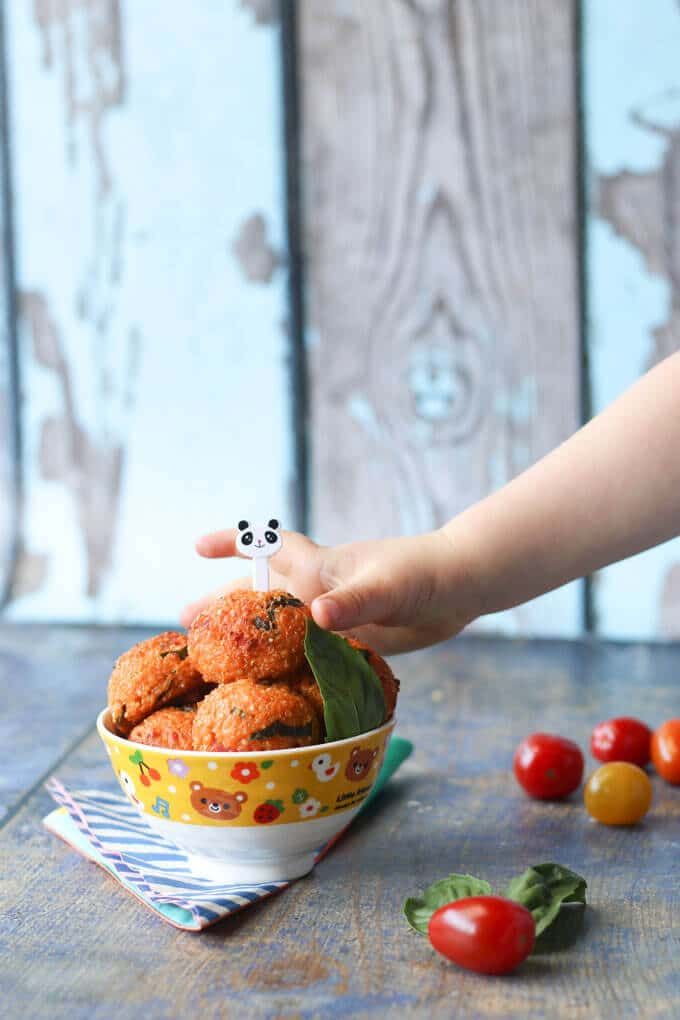
Tomato & Rice Soup
Ingredients:
- 1 large onion, quartered and thinly sliced
- 1/2 cup finely chopped celery
- 1 medium carrot, sliced
- 3 tablespoons butter
- 8 large tomatoes, peeled, seeded, chopped
- 8 cups chicken broth
- 3 tablespoons uncooked long-grain rice or rice blend
- 1/2 teaspoon salt
- 1/8 teaspoon or dried leaf thyme, or to taste
- freshly ground black pepper, to taste
- 1/4 cup finely chopped fresh parsley
Directions:
Step 1: In a saucepan, sauté onion, celery and carrots in butter until softened but not browned.
Step 2: Add tomatoes and a small amount of chicken broth. Simmer for 15 minutes.
Step 3: In a stock pot, combine sautéed vegetables, remaining chicken broth and rice.
Step 4: Season with salt, thyme and pepper. Simmer 20 to 30 minutes.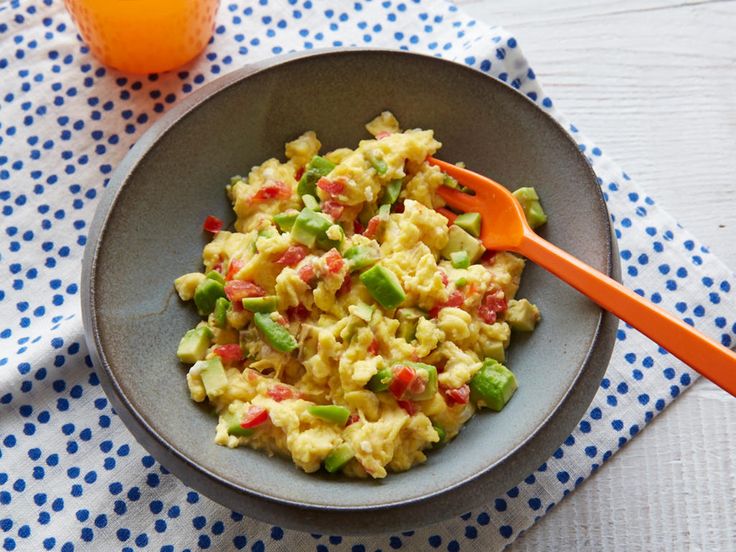 Serve garnished with parsley. If desired, blend a few cups of soup and add back to the mixture for a thicker soup.
Serve garnished with parsley. If desired, blend a few cups of soup and add back to the mixture for a thicker soup.
Serves 8 to 10. adapted from Southern Foods @ about.com
Foods Good to Mix With Tomatoes
- Carrots
- Corn
- Eggplant
- Green Beans
- Leeks
- Peas
- Plantains or bananas
- Summer Squash – zucchini, yellow
- Lentils
- Pasta
- Rice
- Chicken
- Beef
- Pork
Remember, always consult with your pediatrician regarding introducing solid foods to your baby and specifically discuss any foods that may pose allergy risks for your baby.
ORAL ALLERGY SYNDROME |
|---|
The food on this page may be one involving OAS. OAS occurs when a person sensitive/allergic to pollen develops a reaction to fruits/veggies that have a similar type of pollen. Itching & swelling of the lips, the mouth and/or throat are typical symptoms.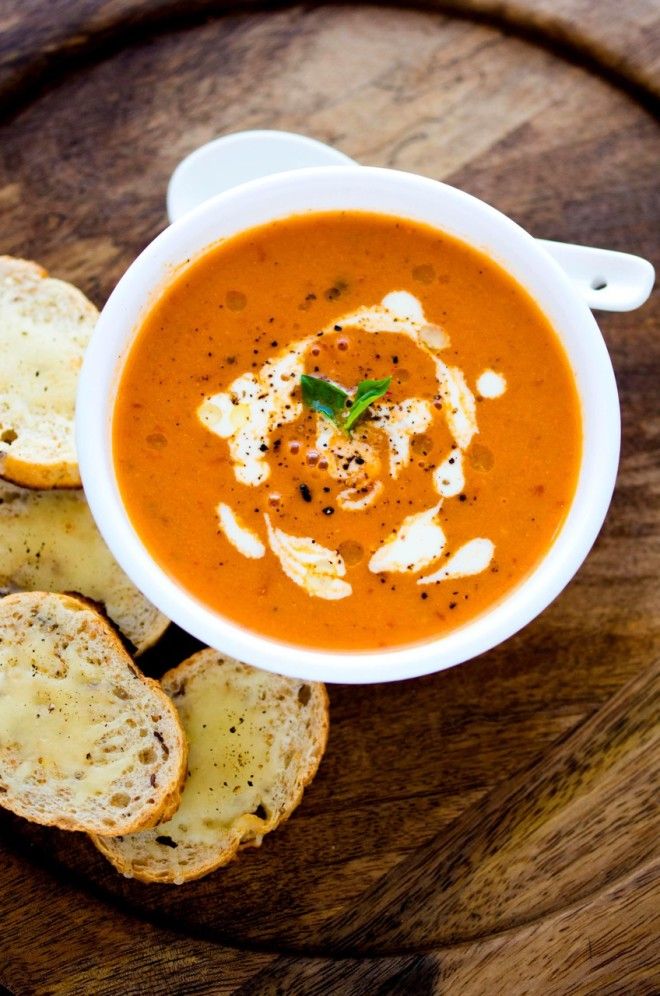 These symptoms normally appear within minutes of eating the offending food and may be worse during the spring and fall pollen seasons. Rarely is an OAS life threatening. Click below to learn more. These symptoms normally appear within minutes of eating the offending food and may be worse during the spring and fall pollen seasons. Rarely is an OAS life threatening. Click below to learn more. |
| Birch Pollen Allergies |
| Birch pollen allergies are associated with apple, carrot, cherry, pear, peach, plum, fennel, walnut, potato, spinach, buckwheat, peanut, honey, celery, and kiwifruit. |
| Cedar Allergies |
| Japanese cedar allergies are associated with melon, apple, peach and kiwifruit. |
| Mugwort Allergies |
| Mugwort allergies are associated with celery, carrot, spices, melon, watermelon, apple, hazelnut, and chestnut. |
| Grass Pollen |
| Grass pollen allergies are associated with melon, tomato, watermelon, orange, rice and cherry. |
| Ragweed Pollen |
Ragweed allergies are associated with melon, chamomile, honey, banana, and sunflower seeds. |
| Latex |
| Latex allergies may be cross-reactive to banana, avocado, kiwi and papaya. |
SHARE ON FACEBOOK SHARE ON PINTEREST
Tomato dishes in a child's diet
At what age should tomato dishes be included in the child's menu and what can be offered to the baby to try? Tomatoes belong to the nightshade family, and they all, to one degree or another, contain narcotic and drug-like chemical components.
Composition:
Vitamins of groups B, PP, K, C - in large quantities, carotene and lycopene (determine the color of the tomato - red or yellow), folic acid. nine0003
Minerals - calcium, sodium, magnesium, iron, chlorine, phosphorus, sulfur, silicon, iodine.
There is a lot of sugar in tomatoes, there are proteins, starch, organic acids, fiber and pectin.
Lycopene is a carotenoid, a substance with a strong antioxidant effect on the body. In fresh tomatoes, its content (depending on the variety) is from 5 to 50 mg per kilogram, in tomato sauce - 62 - 134, and in tomato paste - 54 - 1500 mg / kg of product.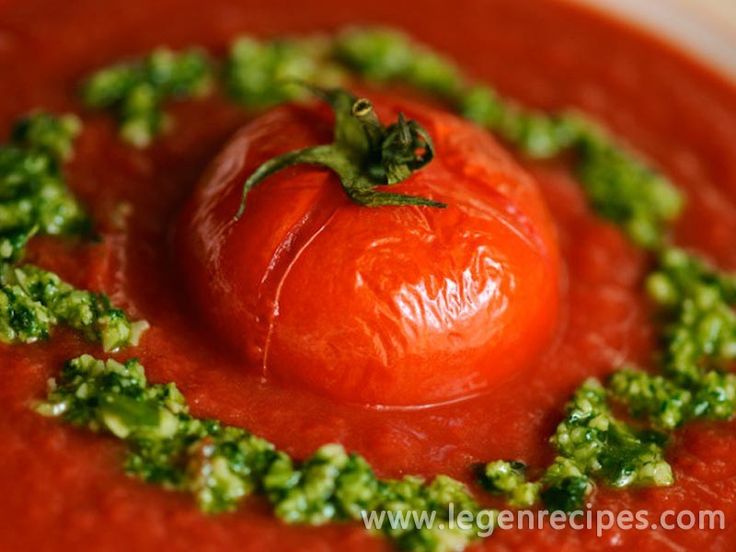 Scientists, based on many experiments, claim that lycopene helps reduce the risk of cancers such as prostate, stomach and lung cancer. nine0003
Scientists, based on many experiments, claim that lycopene helps reduce the risk of cancers such as prostate, stomach and lung cancer. nine0003
Read also: Stuffed tomatoes with herbs and cheese
Until recently, it was believed that tomatoes contain a large amount of oxalic acid, harmful to the body. Recent studies have shown that the amount of this acid in tomatoes is not significant, but they have a lot of malic and citric acid.
Contraindications
- Do not offer tomatoes to children under 1 year old, from one to three years old - it is better to try a small amount of baby tomato juice or a piece of tomato without skin. nine0038
- People prone to allergic reactions should not lean on tomatoes.
- It is necessary to limit the use of tomatoes in patients with gout, hypertensive patients, people with kidney and gastrointestinal diseases.
- If you have cholelithiasis, you should also give up tomatoes.

Recipes:
puree with colored cabbage and tomatoes
from 3 years old
150 g of cauliflower,
20 g of butter,
300 g tomatoes, peeled and finely chopped.
30 g hard cheese.
See also: Baked feta with cherry tomatoes
Disassemble the cabbage into florets, wash and boil in salted water until tender. Melt the butter in a saucepan, add the finely chopped, peeled tomatoes and simmer, stirring, until they turn into a pulp.
Add the grated cheese to the hot tomato puree and stir. Mix the cauliflower with the tomato-cheese mass and beat in a blender to a puree. nine0003
Puree can be frozen.
Borsch
from 2 years old
2 potatoes,
1/4 cabbage cabbage,
1/3 onion,
1-2 red tomatoes,
1 carrot,
1 beet,
salt,
sugar.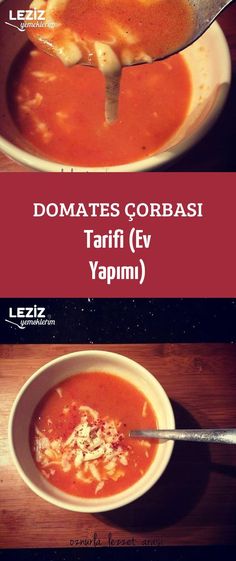
Cut the washed and peeled beets and carrots into strips and cook in boiling salted water for 15 minutes. Then add shredded cabbage and diced potatoes and cook for another 20 minutes. Saute the onion in a preheated pan, then add the peeled and chopped tomatoes to it. Simmer covered for 7 minutes. Add the onion sautéed with tomatoes to the boiling soup, add a pinch of salt and sugar and cook until tender over low heat. nine0003
Read also: cutlets on skewers with cherry tomatoes
Green tomatoes
1 kg of green tomatoes,
1 kg of sugar,
9000 300 ml of water,in 1 hour. l. citric acid and vanillin.
Cut the tomatoes from the side of the stalk and remove the seeds. Place in a saucepan, cover with water and boil for 5 minutes. Then drain the water, pour cold water over the tomatoes again and boil. Repeat the procedure a total of 3 times. Boil the syrup from water and sugar, dip the tomatoes into it (you can peel them), cook until tender.